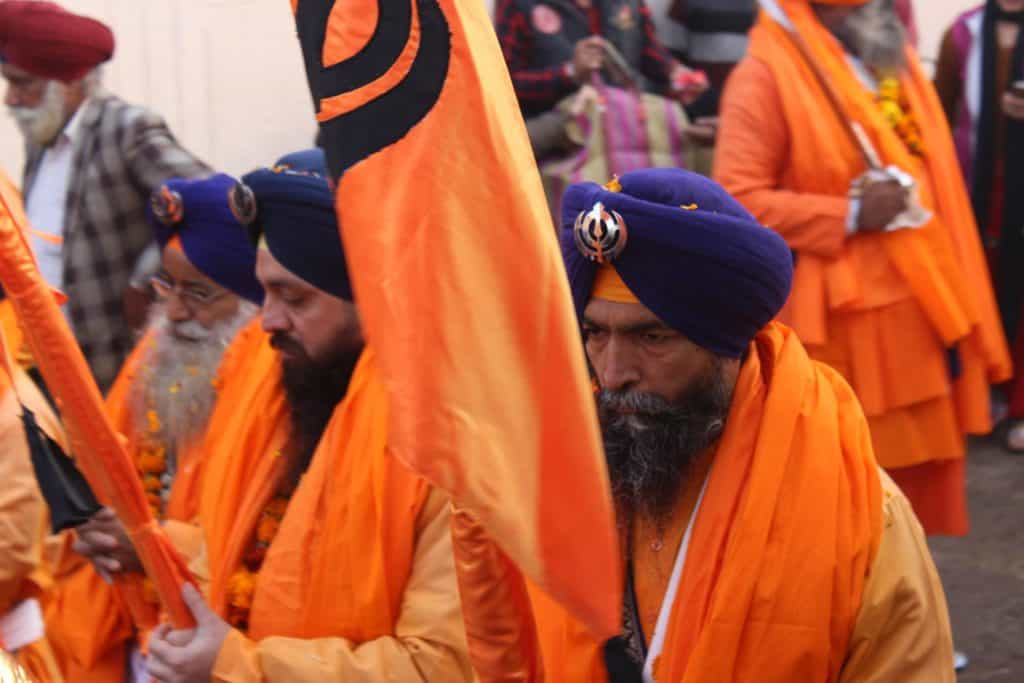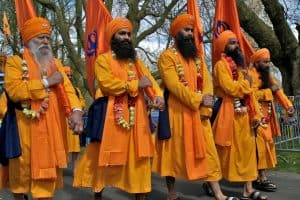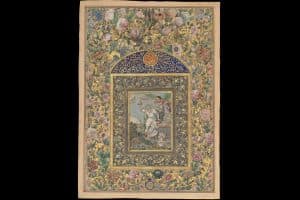By Hardeep Singh
Annual Home Office hate crime figures showed a 169 per cent rise in attacks on Sikhs in 2021-22 over the previous year. The sharp rise led to the Labour MP Preet Kaur Gill writing to the home secretary and calling on the government to take action to tackle the problem.
Examples of hate crime where the victim is a Sikh
2010 A pig’s head was thrown onto the drive of Parmjit Singh Dhanda, who was Labour MP for Gloucester from 2001 until the 2010 General Election
January 2015 A revenge attacker motivated by the murder of soldier Lee Rigby attempted to behead a Sikh dentist in Wales
September 2016 A former soldier was jailed for racially abusing his Sikh neighbours in Derby
November 2020 A schoolboy in Telford was attacked by other pupils who knocked his dastar (Sikh turban) off his head
The problem of definition
There has been pressure from the Sikh community for many years that hate crimes against Sikhs should be better defined, recorded and monitored so that the true extent of the problem is understood and action can be targeted at the problem, in a similar way to measures tackling anti-Muslim and anti-Jewish hate crime.
Despite some high-profile attacks against the British Sikh community listed above, there is no approved (or adopted) definition of anti-Sikh hate crime.
This is in contrast to a definition for Islamophobia that has been adopted by councils up and down the country, and antisemitism, for which the UK government formally adopted the International Holocaust Remembrance Alliance’s working definition in 2016. There is also no government-adopted definition pertaining to hatred targeting Christians or Hindus.
The 2020 report from the All-Party Parliamentary Group (APPG) for British Sikhs had come up with a workable definition of hate crime: “Anti-Sikh hate is any incident or crime which is perceived by the victim or any other person to be religiously or racially motivated by hostility, hatred or prejudice against Sikhs or those perceived to be Sikh people, gurdwaras, organisations or property.” But this has still not been agreed.
Professor Jagbir Jhutti-Johal, from Birmingham University, said: “Any working definition of anti-Sikh hate crime must be accurate, and reflect a true picture of what’s happening on the ground, or on social media.”
The problem of mistaken identity
The 2020 APPG report concluded that anti-Sikh hate crimes were not visible because they fell into at least three categories: race and religion; Sikh and religion; and Muslim.
“Muslim” features because Sikhs have been attacked simply because, in cases of mistaken identity, they look Muslim. The APPG report gave one example in the United States where a Sikh man, Balbir Singh Sodhi, was shot dead soon after the 9/11 attacks in 2001 by a killer who thought Sodhi was Muslim.
Professor Jhutti-Johal and Hardeep Singh co-authored a book in 2020: Racialization, Islamophobia and Mistaken Identity: The Sikh Experience, which reviews crimes of mistaken identity and aims to provide a deeper understanding of perceptions of anti-Sikh sentiment.
The professor is concerned at the latest Home Office figures. “We have to unpack this data to ensure we are talking about genuine anti-Sikh hate crime incidents, and not anti-Muslim attacks against Sikhs, arising due to mistaken identity,” she said.
Also in 2020, the academics Dr Imran Awan and Irene Zempi produced the briefing paper Non-Muslim Men who Suffer Islamophobia, interviewing nine Sikh participants on the wider impact of anti-Muslim hatred.
One, Parminder, spoke of the problem he faced online, citing a post in which he was abused with the words “Go home, you f***ing Muslim”. A second, Dalbir, said that two weeks before to the EU referendum he received WhatsApp messages: “Like Vote out. Kick out the Muslims.”
The problem of under-reporting
In her letter, Preet Kaur Gill also asked for government support to improve the reporting of hate crime. The earlier APPG report pointed to a Sikh survey that said 85 per cent of hate crimes in 2019 were not reported because people felt it was a waste of time. It said Sikhs needed an organisation to monitor hate crime, like Tell Mama or the Community Security Trust, which both receive grants from the government.
She said that two years later, the government departments had not responded to requests for a meeting to agree a solution to under-reporting.
Her letter concludes: “I am writing therefore to ask that you take urgent action to reverse this alarming trend [of anti-Sikh hate crimes] and protect the Sikh community by implementing the recommendations of the APPG report, specifically regarding the term, definition and support for anti-Sikh hate crime reporting.”
In January 2022, Sikhguard was set up to encourage Sikh communities and individuals to report hate crime. The aim is to enable local authorities to realise the extent of the problem, by collecting better data.
The Home Office has not responded to our request for comment.
References
Preet Kaur Gill’s letter to the home secretary
APPG British Sikhs: A Report into Anti-Sikh Hate Crimes
Non-Muslim Men who Suffer Islamophobia, by Imran Awan and Irene Zempi



















